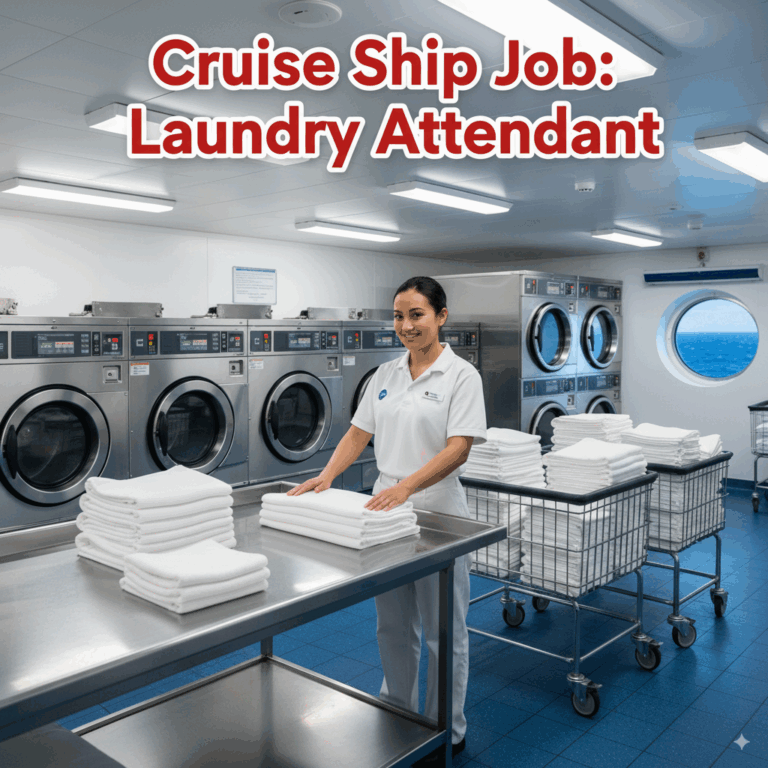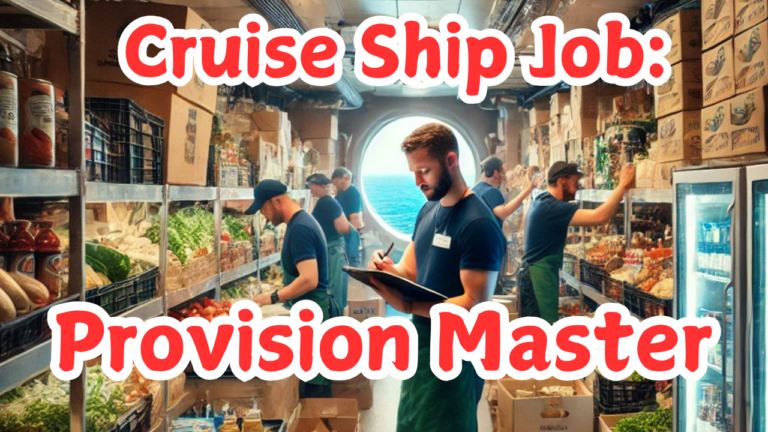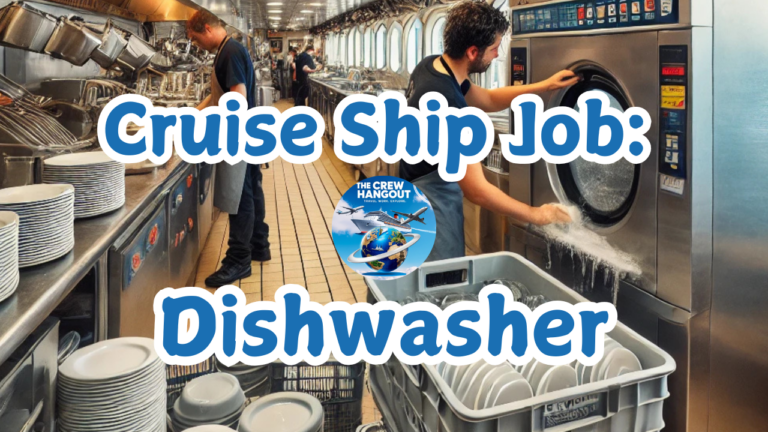What’s Like to Work on a Cruise Ship as a Chef: A Day in the Life of a Cruise Ship Chef.
If you’re a chef seeking a fun, fulfilling career path, working on a cruise ship might be just the adventure you’re after. Being a cruise ship chef is not only about cooking; it’s about blending a passion for food with a love for travel and new experiences, all the while your kitchen is traveling the globe with you.
Table of Contents
In this article, we’ll dive deep into what it’s really like to work as a chef on a cruise ship. We’ll explore the day-to-day responsibilities, requirements, salaries, and unique aspects of this high-paced, global career.
The Unique Experience of Being a Cruise Ship Chef
When you work on a cruise ship as a chef, no two days are the same. One moment you’re docked in the sunny Caribbean, the next, you’re preparing meals while crossing the Atlantic. Every day, you and your team could be serving thousands of meals, from casual buffets to high-end gourmet dining. Cruise ships cater to passengers who expect high-quality meals, even while traveling through remote parts of the world.
Cruise ships often have multiple dining venues, each offering a different experience. As a chef, you could find yourself rotating between the main dining room, buffet stations, specialty restaurants, and even the crew dining area. The kitchen might serve everything from international delicacies to comfort food, and chefs must be skilled in handling a wide variety of culinary challenges.
You’ll also learn how to cook with limited resources. The ship stocks food before setting sail, and you must manage the inventory carefully to ensure everything is fresh and available when needed. It’s a job that demands flexibility, creativity, and teamwork to ensure the kitchen runs smoothly.
The Daily Routine: Long Hours and High Standards

A typical day in the life of a cruise ship chef is intense. You’ll start early and finish late, often working 10 to 12 hours a day, seven days a week. There are no weekends off, but you do get some time to explore when the ship is in port. Most chefs work in rotating shifts, so you may be handling breakfast one week and dinner the next.
The kitchen, or galley, is a fast-paced environment where you’ll be part of a team that could include anywhere from 20 to 100 other chefs, depending on the size of the ship. Cruise ships are like floating hotels, and as a chef, you’ll be tasked with ensuring food quality is top-notch across all the different restaurants on board. It’s a lot of responsibility, but the challenge is part of what makes it rewarding.
A Culinary World Afloat: The Diverse Dining Options on Cruise Ships
Cruise ships have become floating culinary destinations, offering a variety of restaurant styles to cater to every passenger’s taste. From casual buffets to specialty fine dining, each ship curates unique experiences.
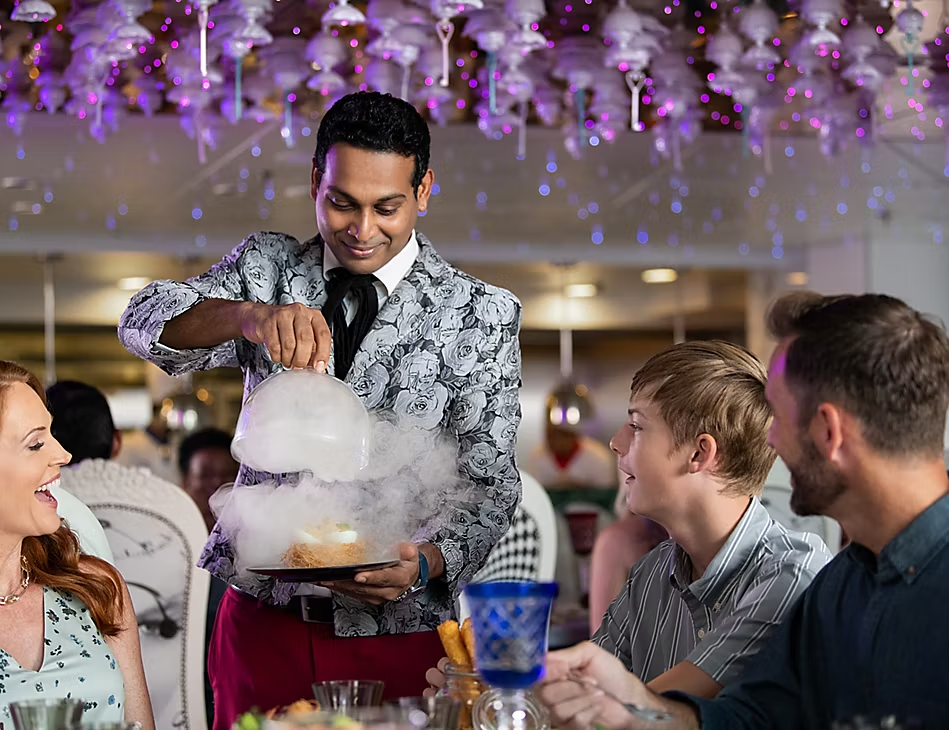
One standout is Wonderland aboard Royal Caribbean’s Oasis-class ships, a restaurant that serves imaginative, molecular gastronomy-inspired dishes such as liquid lobster and magical mushroom soup. The whimsical décor and interactive presentation elevate the dining experience, making it feel like you’ve entered a culinary wonderland.
Norwegian Cruise Line offers a more traditional but equally elevated experience with Le Bistro, their signature French restaurant. On ships like the Norwegian Encore and Norwegian Escape, Le Bistro serves classic French dishes, including escargot, duck à l’orange, and crème brûlée. The elegant ambiance mirrors that of a Parisian bistro, complete with intimate lighting and cozy seating.
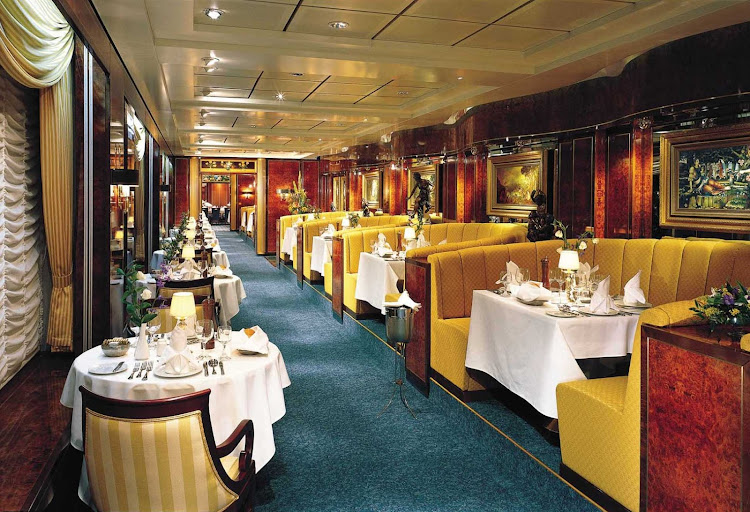
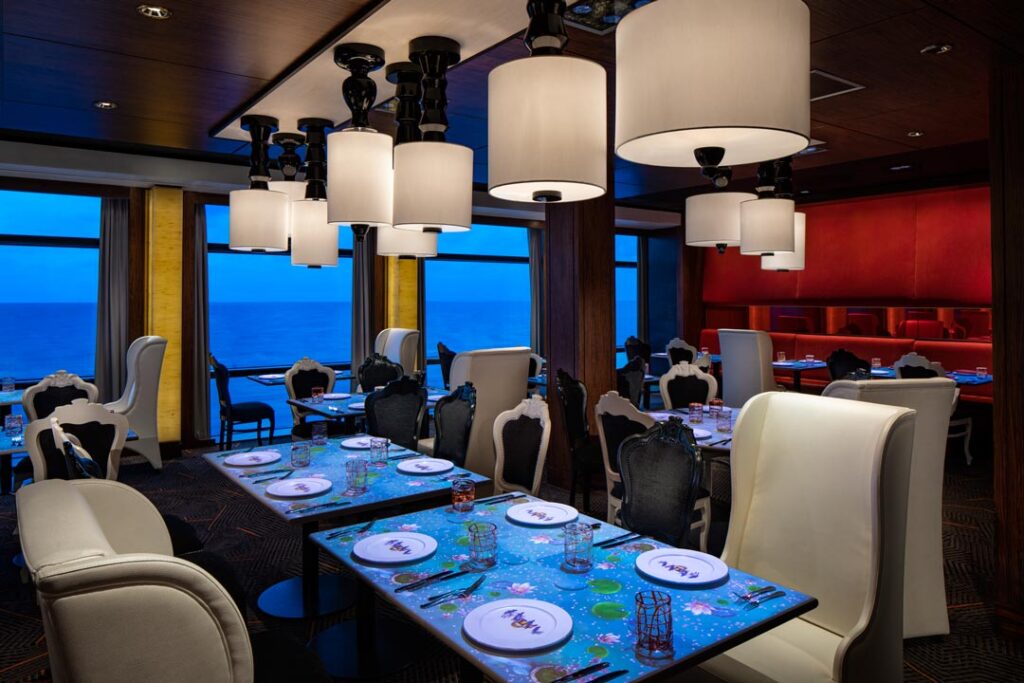
For fans of interactive dining experiences, Celebrity Cruises features Le Petit Chef on ships like Celebrity Edge and Celebrity Apex. Here, animated characters are projected onto diners’ tables, guiding them through a visually captivating culinary journey. The digital story paired with gourmet food makes for an entertaining and delicious experience. The menu includes fine dining options like filet mignon, seared scallops, and decadent chocolate desserts.
Onboard Holland America’s ships like the Nieuw Statendam, you’ll find Rudi’s Sel de Mer, a seafood brasserie created by Master Chef Rudi Sodamin. The restaurant specializes in dishes like Dover sole meunière, lobster bisque, and oysters on the half shell. With an elegant yet cozy atmosphere, Rudi’s Sel de Mer has become a favorite among seafood lovers.
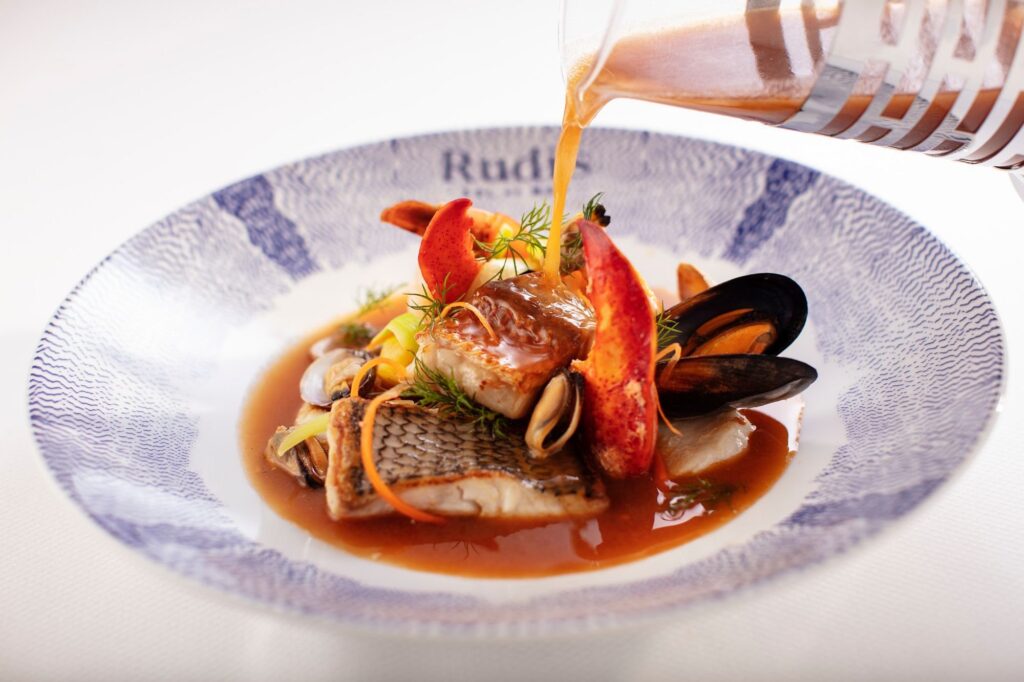
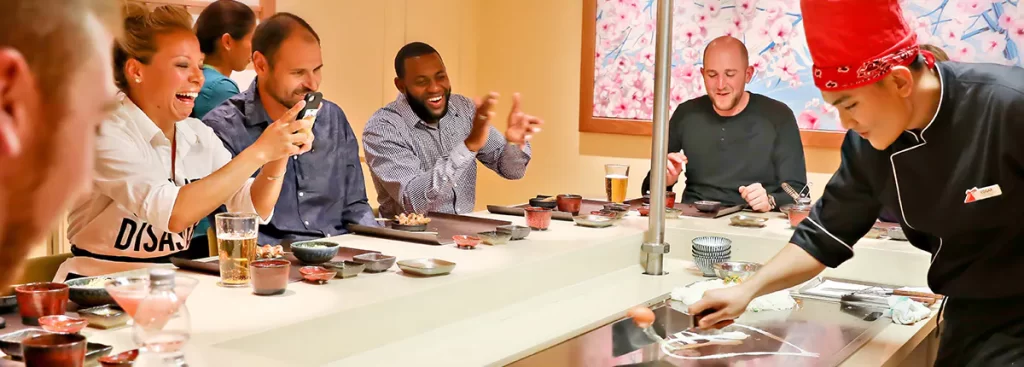
For a taste of Asian fusion, guests aboard Carnival Cruise Line ships such as Carnival Horizon can enjoy Bonsai Teppanyaki, where skilled chefs prepare dishes tableside on a teppan grill. The showmanship is as important as the food, with options like filet mignon, lobster tail, and yakisoba noodles being popular choices.
Requirements: What It Takes to Become a Cruise Ship Chef
To be a cruise ship chef, you’ll need more than just cooking skills. Cruise lines have specific requirements to ensure chefs can handle the unique demands of cooking at sea. Here are the basics:
- Culinary Education: A formal qualification in culinary arts is usually required. This could be a degree, diploma, or certificate from a recognized institution.
- Experience: Most cruise lines require at least two to five years of experience in a professional kitchen, especially in high-volume environments like hotels or large restaurants. The more specialized your skills, such as experience in pastries or specific cuisines, the more valuable you are.
- Certifications: You’ll likely need certifications such as a ServSafe Food Handler certificate or a Ship’s Cook certificate. Some cruise lines also require specific health and safety training.
- Medical and Background Checks: Working on a cruise ship means being at sea for long periods, so you’ll need to pass a thorough medical exam. Background checks are also common to ensure that crew members are trustworthy and reliable.
- Adaptability: Working in a cruise ship kitchen means being ready to handle high-pressure situations, often with limited supplies and in a confined space. Chefs need to think on their feet and adapt to constantly changing conditions.
- Teamwork and Communication Skills: Cruise ship kitchens are diverse, with crew members from all over the world. Strong communication and collaboration skills are essential to ensure a smooth kitchen operation.
- Physical Fitness: The long hours and fast-paced environment of a cruise ship kitchen can be physically demanding. Chefs are often on their feet for extended periods and must be able to keep up with the demanding workload.
Salary and Compensation: What Can You Expect?

The pay for cruise ship chefs varies depending on the position and the cruise line. Here’s a general breakdown:
In addition to salary, cruise ship chefs typically receive free room and board, meals, and travel opportunities. Some cruise lines also offer bonuses or gratuities based on passenger satisfaction, making the total compensation package quite attractive.
The Perks: Why Chefs Love Working on Cruise Ships

One of the most appealing aspects of being a cruise ship chef is the chance to travel the world. You’ll visit exotic destinations like the Caribbean, Mediterranean, Alaska, and beyond—all while getting paid. On your days off, you’ll have the opportunity to explore these locations, adding adventure and cultural experiences to your resume.
Another perk is the networking opportunities. You’ll be working with chefs from all over the globe, each bringing their unique culinary expertise to the table. This is a chance to learn new techniques, discover different cuisines, and build a global network of contacts in the culinary world.

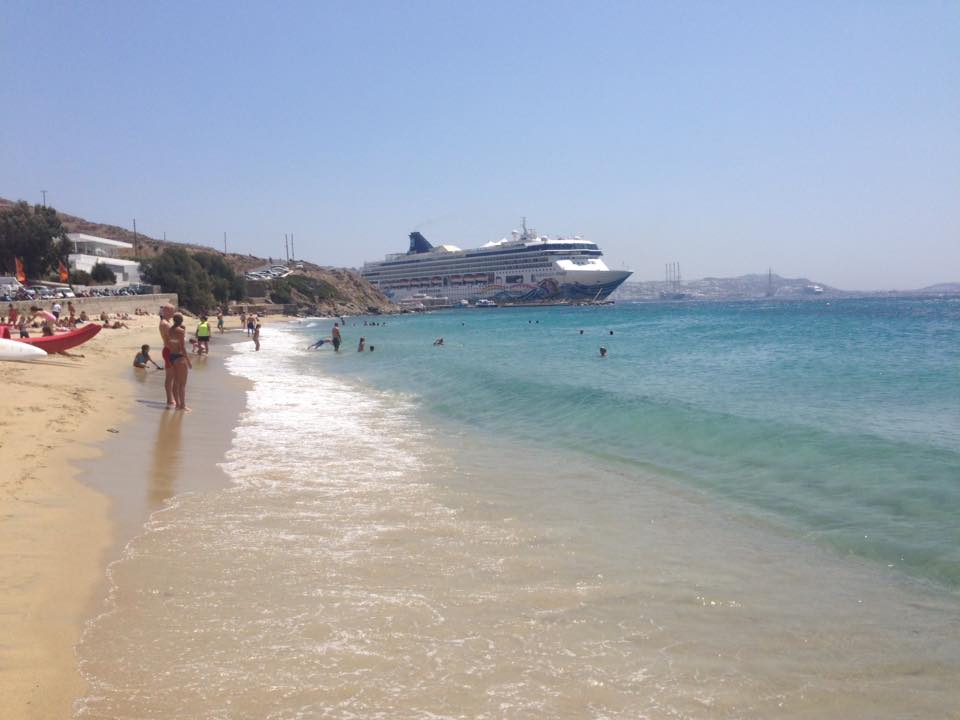


Plus, with free room and board, your living expenses are covered, allowing you to save a significant portion of your salary. This is especially attractive for those who want to build up savings while enjoying an adventurous lifestyle.

What to Pack for your First Contract on a Cruise Ship!
Starting your first cruise ship contract? This essential packing guide covers what to bring, what to skip, and how to avoid common first-contract mistakes before you join your ship.
Challenges: The Hard Realities of the Job

While there are many perks, working as a chef on a cruise ship also comes with its challenges. The long hours and demanding schedule can lead to burnout if you’re not careful. The constant movement of the ship can also be disorienting, especially during rough seas, and adjusting to life at sea can take time.
Living in close quarters with other crew members means privacy is limited, and you’ll need to be prepared for a unique social dynamic. Most contracts last for several months, so you’ll be away from home for extended periods, which can be tough for those with family responsibilities.
Despite these challenges, many chefs find the experience of working on a cruise ship to be immensely rewarding, both professionally and personally. It’s an opportunity to see the world, develop your culinary skills, and build memories that will last a lifetime.
Final Words: Is Being a Cruise Ship Chef Right for You?
Working as a chef on a cruise ship is not for everyone, but for those who crave adventure, thrive under pressure, and have a passion for cooking, it can be an incredibly fulfilling career path. You’ll be able to see the world, meet new people, and develop skills that will make you stand out in the culinary world.
If you’re ready for the challenge, working as a chef on a cruise ship might just be the best career move you’ll ever make.





